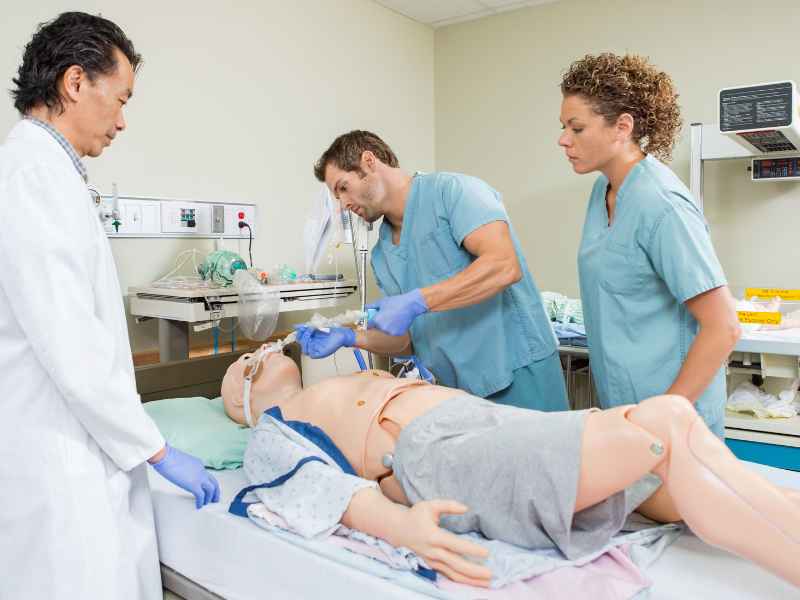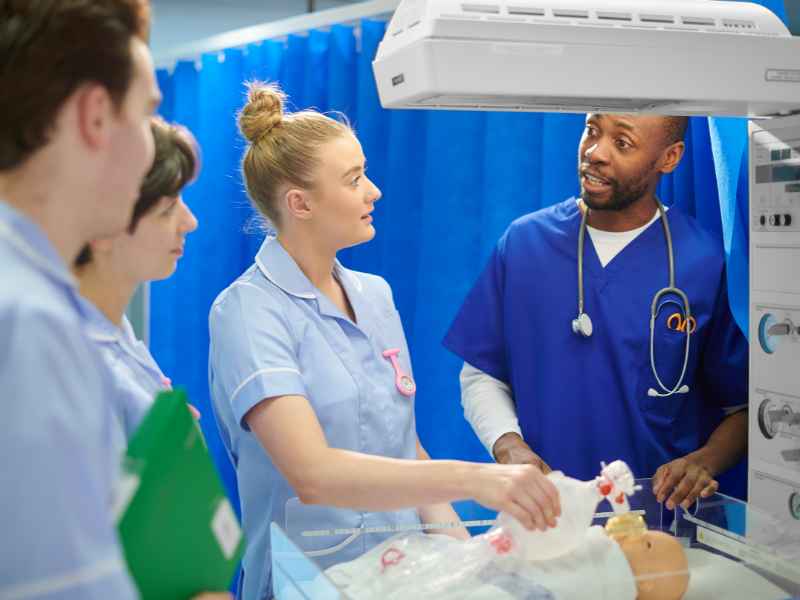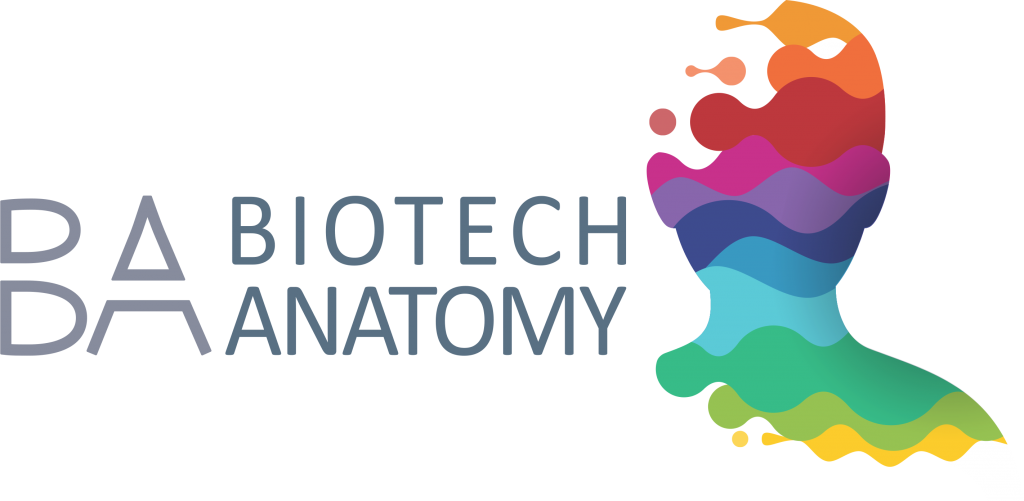SIMULATION LAB FOR MEDICAL STUDENTS
Embarking on a nursing career is a journey filled with learning and hands-on experience. One of the most innovative ways I’ve seen nursing students gain practical knowledge is through simulation labs. These labs aren’t your average classrooms; they’re high-tech, realistic clinical settings that mirror the fast-paced world of healthcare.
In these simulation centers, students get to interact with life-like mannequins and state-of-the-art medical equipment. It’s a safe space where making mistakes is part of the learning curve, ensuring that when it’s time to treat real patients, they’re well-prepared and confident. Simulation labs are more than just role-playing; they’re a critical bridge between theory and real-world application for aspiring nurses.
With simulation labs, the learning process is threefold: prepare, participate, and debrief. This structured approach not only reinforces theoretical knowledge but also hones clinical skills in a controlled environment. From emergency room crises to the quiet intensity of an ICU, these labs cover it all, ensuring that when students step into their roles, they’re not just ready; they’re experienced.

Simulation & Experiential Learning Lab
As a student in the medical field, I’ve seen firsthand how critical hands-on experience is to understanding the complexities of patient care. That’s where Biotech Anatomy LTD comes into play with its top-tier simulation lab for medical students. The services offered by Biotech Anatomy LTD are designed not only to educate but truly to prepare students for the unpredictable nature of healthcare.
The simulation labs are equipped with the latest in medical technology, including IV pumps, defibrillators, and access to electronic health records. These resources are crucial for me to develop a deep understanding of modern medical practices. The mannequins used are astonishingly life-like, offering a range of scenarios from routine care to critical emergencies, allowing me to hone my decision-making skills in a pressure-free environment.
Biotech Anatomy LTD labs are laid out to mimic actual hospital settings, ensuring that I experience the closest thing to real-world environments. From emergency rooms to intensive care units, and from operating rooms to labor and delivery rooms, these labs cover all essential areas of patient care. The benefit here is that I’m not just learning in a classroom; I’m engaging in practices that mirror real-life medical challenges.
The labs promote a three-step learning approach:
- Preparation: Before beginning any simulation, I’m provided with the necessary theoretical background.
- Active Participation: I’m then immersed in the simulation, applying my knowledge in real-time.
- Debriefing: After the exercise, a comprehensive review is conducted, which is essential for understanding the nuances of patient interactions.
By utilizing the resources at Biotech Anatomy LTD, I’m confident that I’m receiving an education that will seamlessly transition into practical application once I begin my career. It’s reassuring to know that I can make mistakes here where it’s safe, rather than during patient care where stakes are high. My experiences in these simulation labs are arguably the most valuable aspect of my medical education — indispensable for my future success as a healthcare professional.
Virtual & Digital Learning
Screen-Based Simulations
In the rapidly evolving world of medical training, I’ve observed that screen-based simulations are a game-changer, offering a digital approach to learning that complements traditional methods. This technology allows medical students to interact with virtual patients or healthcare scenarios via computer screens, tablets, or smartphones, engrossing them in a safe, controlled learning environment.
Screen-based simulations include:
- Virtual patients for case studies
- Simulated worlds for broader healthcare management
- Haptic trainers for sensory feedback
- Resource management simulators for operational training
The portability and accessibility of these simulations mean they can be accessed anywhere, anytime, which is crucial for learning that doesn’t stop at the classroom door. They also provide the added benefit of tracking usage data which is invaluable for both students and educators to monitor progress and identify areas of improvement.
Extended / Virtual / Augmented Reality (XR/VR/AR)
Extended Reality (XR) blurs the lines between the physical and digital worlds. As a part of Biotech Anatomy LTD’s services, XR, including Virtual Reality (VR) and Augmented Reality (AR), has significantly enhanced the training of medical students. By using VR goggles, learners can immerse themselves in a simulated world, practicing procedures or experiencing complex patient-care scenarios without the risks associated with real-life practice. AR, on the other hand, superimposes informative digital imagery over the real-world view, allowing students to gain augmented hands-on experience.
Learners can, for example, simulate grocery shopping with the constraints of food insecurity or navigate patient care scenarios with a realistic spatial presence. These technologies not only foster a deeper understanding of the material but also stimulate emotional engagement which is essential for empathetic patient care. The versatility of these simulators is evident in their adaptability to a wide range of medical specialties, each presenting unique scenarios that reflect the diversity of real-world medicine.
Medical Task Trainers
When diving into the world of medical education, I’ve found that Medical Task Trainers stand out as an invaluable resource. At the heart of skill development, these trainers offer a targeted training approach that is essential for healthcare learners aiming to enhance their psychomotor abilities, build confidence, and ultimately improve patient safety.
Task trainers are designed as partial or full-body devices, each focusing on specific human anatomy parts or procedures. This specialized form of hands-on education is like no other, providing an interactive learning experience. For medical students eager to refine their skills, task trainers are not just a practice tool; they represent a leap towards professional readiness.
The use of medical task trainers within a SIMULATION LAB FOR MEDICAL STUDENTS hosts several benefits:
- Allows for controlled, repeated practice of specific medical procedures.
- Enables hands-on experience without the risks associated with practicing on real patients.
- Supports a range of difficulty levels, from beginner to advanced scenarios, suitable for varying degrees of expertise.
At Biotech Anatomy LTD, the simulation labs are equipped with a diverse lineup of task trainers designed to simulate real-life medical scenarios. From basic suturing techniques to more complex procedures like central line insertions, the task trainers are meticulously crafted to mimic the human body’s tactile response and anatomy, offering an authentic user experience.
Learners can receive supervision, obtain immediate feedback, and engage in essential debriefing sessions to reflect on their performance. This comprehensive educational approach augments the learning curve significantly. It’s not just about getting it right; it’s about understanding each step, adapting to new challenges, and achieving precision under the guidance of experienced educators.
On a journey to sharpen their medical prowess, students can tackle a slew of procedures within the safe bounds of the lab. The wide range of clinical inventory at Biotech Anatomy LTD’s facilities also includes high-fidelity human patient simulators, augmenting the depth and breadth of practical education accessible to learners.
The investment in such technology translates into learners who are not only more adept at clinical procedures but also more attuned to the nuances of patient care. In today’s rapidly evolving medical landscape, having a robust, hands-on educational foundation is indispensable. As the healthcare sector advances, so must the tools and methodologies at the disposal of those at the forefront of patient care.
Surgical Skills Trainers
When it comes to mastering the art of surgery, practice makes perfect. I understand the critical role that hands-on experience plays in the proficiency of surgical techniques, and that’s where surgical skills trainers stand out. These innovative educational tools in the simulation lab environment offer medical students a safe and controlled setting to refine their surgical abilities.
UMass Chan Medical School iCELS Simulation Labs feature an area dedicated to surgical skills development, where future surgeons engage in both dry and wet lab experiences.
Having the chance to use real instruments on lifelike materials, medical students can practice a variety of procedures including laparoscopy, surgical microscopy, and suturing. It’s all about building skill, dexterity, and confidence before stepping into an operating room.
Equally important, these labs offer access to cutting-edge technology like the Da Vinci Surgical System and the GI Mentor Endoscopy Simulator. Conducting surgery with robotic assistance is becoming more commonplace, and familiarity with these high-tech systems is now a must-have capability for any aspiring surgeon.
- Kicking things off, students begin with simpler tasks to warm up their hands and eyes for more complex maneuvers.
- Stepping up a notch, they move on to more intricate procedures that require precision and coordination.
- Over time, as students advance, they’re challenged with scenarios that mimic real-life operations, pushing them to adapt and think on their feet.
This structured escalation of difficulty ensures that by the time they reach real-world operating theatres, they’ve been through rigorous preparation. Moreover, having repeated exposure to a variety of surgical tools and environments creates a depth of experience that would be hard to achieve outside of these advanced simulation labs.
Using medical task trainers for guided practice under simulated conditions is pivotal for student surgeons to nail down the details of their craft without the risks of practicing on real patients. It’s a controlled realm where errors turn into lessons and proficiency is achieved with every repetition. In essence, these labs are the bridge from educational theory to medical excellence in the surgical field.

Hybrid Simulations
Hybrid simulations have revolutionized the way medical students learn and practice their skills. At Biotech Anatomy LTD, I’ve come to appreciate the immense value these simulations add to the medical education experience. Hybrid simulations merge various educational tools, like high-fidelity manikins, standardized patients, and realistic medical environments, to create multi-sensory learning scenarios that are hard to distinguish from real life.
In these simulations, medical students are thrust into a versatile simulation space designed to mimic an emergency room or other clinical settings. Realism factors heavily into these sessions, not just through the physical environment but also through the emotionally charged interactions with role-playing individuals. Such immersion helps refine students’ abilities to manage complex situations, enabling them to focus amidst the stress and distractions of real clinical practice.
One of the main advantages of Biotech Anatomy LTD’s hybrid simulations is the interprofessional environment it fosters. Students get to work with peers from various medical disciplines, mirroring the collaborative nature of hospital settings and clinics. This exposes them to the dynamics of team-based healthcare, which is crucial for any aspiring medical professional.
Moreover, advanced learners benefit from the concept of ‘realistic distractors’ or ‘noise’. These deliberate additions to the simulations represent the unpredictable elements of actual medical emergencies, promoting adaptability and presence of mind in prospective healthcare providers. This advanced training is central to Biotech Anatomy LTD’s commitment to preparing students for the unforeseeable challenges of patient care.
For those concerned with technical skills, our simulation labs also offer medical task trainers. These allow for repetitive, hands-on practice of specific procedures in a risk-free environment. Whether it’s a routine examination or a complex surgical technique, students can refine their capabilities before moving on to real-world applications.
Biotech Anatomy Ltd’s simulation labs are an investment in medical excellence, providing future healthcare professionals with a depth of experience that is quintessential for success in this fast-paced industry. While the simulated world is controlled and predictable, the confidence and skill that students gain from it are genuine and lasting.
Process & Device Usability Testing
When it comes to mastering medical procedures, usability testing is a crucial stage in the learning process. Within the walls of Biotech Anatomy LTD, SIMULATION LAB FOR MEDICAL STUDENTS deeply integrates the concept of Process & Device Usability Testing. This phase of education is comprehensive and immersive, allowing students to interact with advanced medical devices in realistic clinical, home, or outpatient settings. Here’s how we take usability testing to the next level.
Preparing the Testing Environment
I’m meticulous about the setup. The environment includes everything from the devices and software to instructions, consent forms, and recording devices. Preparation is key, as it mirrors the demands of real-life medical scenarios. The aim is to create a setting so authentic that the interaction with medical hardware and software becomes second nature to our students.
Confirming Participant Schedules
Timeliness and organization are pivotal for smooth simulation events. I ensure every participant receives clear instructions for access, along with necessary logistical details such as directions and parking. Whether the simulation is conducted onsite or online, accessibility for self-directed learners or remote observers is guaranteed.
- Preparing the environment: materials, equipment, instructions
- Confirming schedules: smooth operation, accessibility
The Simulation and Debrief Experience
Equipped with live video, recording, and playback capabilities, my approach allows students and educators alike to engage in the simulation with the option to review performances meticulously. Whether I’m facilitating the event onsite or remotely, the focus remains on creating an enriching learning experience. An example of this is UMass Chan Medical School iCELS’s full-scale in-situ simulation that mimicked an operating room crisis, complete with a bleeding mannequin and the mobilization of a vascular team.
Real-World Application
The technologies and methods I integrate into simulations at Biotech Anatomy LTD don’t just stay in the labs. Students participate in scenarios that mimic real-world challenges. From laparoscopic surgery simulations with potential vascular damage risks to the stabilization and dispatch involved in emergency response, simulation-based testing is not only a training mechanism but a gateway to enhancing overall medical proficiency.
To truly understand the complexities and nuances of medical procedures, hands-on practice with real-time feedback is indispensable. At Biotech Anatomy LTD, I guarantee an educational encounter where students don’t just learn but excel.
Customize Your Simulation
Customizing simulations is a critical component of delivering education that resonates with medical students. When I partner with Biotech Anatomy LTD for their simulation lab resources, I’m tailoring the learning experience to the specific needs of my learners. Whether it’s for gastrointestinal procedures using state-of-the-art simulators like the GI Mentor or complex surgical scenarios, Biotech Anatomy LTD ensures that every aspect of the simulated environment is as close to real life as possible.
- Real-life Patient Scenarios: With over 120 tasks and virtual patient cases, the customization options are virtually limitless.
- Hands-on Experience: Students get to practice with original Colonoscopes and Duodenoscopes, complete with tactile sensations.
Using Biotech Anatomy LTD’s lab offers a multitude of benefits for medical students.
- Cutting-Edge Technology: Biotech Anatomy LTD labs are equipped with the latest medical technology, enhancing both learning and retention.
- Emotional Engagement: The realism of the simulations ensures that students are emotionally invested, which augments learning outcomes.
- Adaptable Learning Environments: No matter what the curriculum requirements are, the labs can be adapted to suit a wide array of medical fields and procedures.
Leveraging these resources isn’t just about accessing high-caliber tools; it’s about instilling confidence and competence in medical students. By diving into scenarios that mimic real clinical challenges, they’re not just learning—they’re preparing to excel.
Biotech Anatomy LTD labs represent an investment in the future of healthcare. As I explore the potential of Simulation Labs for Medical Students, the value of customizing the learning experience cannot be overstated. It’s all about providing an immersive, effective, and innovative education that prepares students for the real world from day one.
Simulation Activity Locations
I’ve explored the transformative power of simulation labs for medical students and the unparalleled services provided by Biotech Anatomy LTD. These immersive environments bridge the gap between theoretical knowledge and practical application, equipping students with the skills they need to excel in the demanding field of healthcare.
By engaging with cutting-edge technology and realistic scenarios, students not only gain technical proficiency but also the confidence to handle complex medical situations. It’s clear that the future of medical education is deeply intertwined with the innovation found in simulation labs. As a medical student or educator, embracing these dynamic learning tools is a step towards shaping a more skilled and responsive generation of healthcare professionals.


